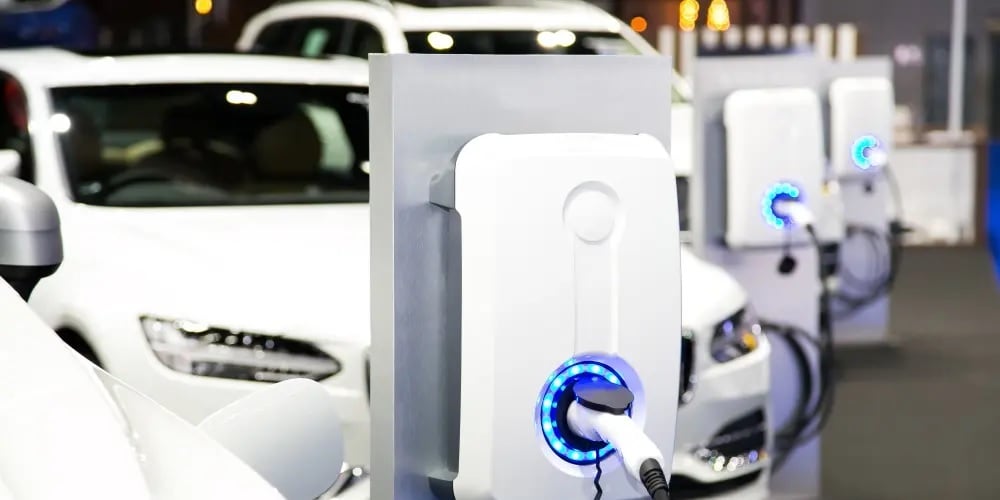Debunking electric vehicle myths for government fleets

The electric vehicle has become something of a boogeyman for public organizations. Today, 46% of fleet managers say that they are concerned about the future of greening initiatives (like electric vehicles) and anxious about how they may impact their daily operations.
Fortunately, converting your public fleet to primarily electric vehicles may be far less stressful than you might believe. In fact, it could do a world of good for your organization and the public that you serve.
Let’s dive into common electric vehicle myths affecting the public sector and the facts surrounding acquisition and expectations for procurement.
A factual look at electric vehicles
There is a great deal of conflicting information about electric vehicles. To combat this, let’s look closer at what they actually are (and what they are not).
Electric vehicles are:
- Powered by motors, not engines. They have fewer components and require less maintenance over time.
- Rechargeable but not always fuel enabled. True electric vehicles run on battery power only, while others (such as hybrids) burn both fuel and battery-stored energy.
- Widely accessible, especially in the U.S. There are more than twenty-eight different electric vehicle models available in the United States from more than eighteen different manufacturers, including Nissan, Mazda, and GMC.
It’s also important to understand what electric vehicles are not:
- Not always 100% electric. Hybrids require fuel to operate, while others (like fuel cell electric vehicles) run on pure hydrogen gas.
- Not always sedans. There are dozens of different makes and models available to choose from, including trucks, cargo vans, and school buses.
- Not only for big cities. Although larger metros typically do have a higher concentration of charging stations and electric vehicle infrastructure, rural communities all over the U.S. can easily accommodate electric vehicles.
Now that we’ve clarified the general construction of electric vehicles, we can dispel a few of the most common myths surrounding their adoption.
Five electric vehicle myths affecting government fleets
Check your knowledge against these electric vehicle myths that may be negatively impacting your government fleet.
1. Electric vehicles are limited in range
This is a common myth shared by government leaders and civilians alike. However, recent advances in electric vehicle technology have proven that range limitations are no longer a concern.
Electric vehicles can now cover hundreds of miles per day on a single charge. Also, many of these vehicles can cover more miles than the average person tends to need. An electric vehicle that can go 124 miles (200 km) on a single charge goes farther than 96% of Americans do in a single day.
2. Electric vehicles are expensive
It’s true that some electric vehicles may cost more money up front. However, these vehicles have the unique potential to save thousands of dollars over time.
Experts suggest that electric vehicles can save up to $10,000 in lifetime costs compared to traditional vehicles. Also, since their upfront price may become more affordable in the next five to ten years, public fleet managers have nothing to lose and everything to gain.
3. Electric vehicles are hard to maintain
Due to their newer technology and more modernized construction, many people believe that electric vehicles are more difficult to maintain than fuel-powered vehicles. However, not only are electric vehicles less complex to manage, but they also generally require less maintenance over time.
Since electric vehicles rely on motors instead of engines, they include far fewer moving parts. Maintenance is also often less intensive and takes less time than traditional services. This provides a wealth of cost savings to government organizations over time, putting more money back into your public fleet budget for bigger and better things.
4. Electric vehicles are slow to charge
Poor infrastructure and limited electric vehicle education have created a myth about tedious vehicle charging times. However, with the right power supply in place, most electric vehicles can replenish their range in an hour or less.
Modernized equipment can charge electric vehicles to full in just 0.6 hours (or thirty-six minutes). This means less downtime for your busy public fleet and fewer concerns related to long overlays.
5. Electric vehicles are missing public chargers
Charging infrastructure for electric vehicles was once severely lacking in the United States. However, years of prioritization and upgraded government funding has quickly remedied the situation.
There are now 130,000 public chargers available across the U.S. As development continues to increase in these areas, as many as 500,000 chargers may be available by 2030.
Where you can learn more about electric vehicle myths
The conversation surrounding electric vehicles is vast, with more research being added every day. If you’re interested in learning more about public fleet electrification, investing in free resources where you can find up-to-date (and factual) information is a good idea.
Check out:
These resources have the details that you need to make informed decisions about electric fleet vehicles.
See how easy it is to get the EV fleet you need without the hassle using Sourcewell’s cooperative purchasing program. Streamline the public procurement process by choosing from hundreds of suppliers already on contract. Sourcewell’s procurement experts competitively solicit and award contracts on behalf of 50,000 participating agencies in North America. Sourcewell has been a government-empowering organization since 1978. Check out our contracts here.


